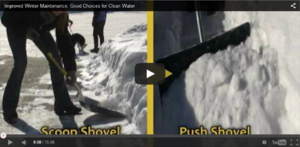
Difference between revisions of "Educational resources for Smart Salting (S2)"
m |
m |
||
| Line 8: | Line 8: | ||
*[http://www.ninemilecreek.org/EDUCATION/PDFs/snowandicecare.pdf 9 Mile Creek Watershed district fact sheet] - this fact sheet offers some background information on effects of salt and a 4-step process for managing ice in residential settings | *[http://www.ninemilecreek.org/EDUCATION/PDFs/snowandicecare.pdf 9 Mile Creek Watershed district fact sheet] - this fact sheet offers some background information on effects of salt and a 4-step process for managing ice in residential settings | ||
*[https://www.pca.state.mn.us/sites/default/files/p-tr1-45.pdf MPCA Salt Pollutes postcard] - offers tips on ways to reduce salt use. Print and distribute to residents and local businesses. | *[https://www.pca.state.mn.us/sites/default/files/p-tr1-45.pdf MPCA Salt Pollutes postcard] - offers tips on ways to reduce salt use. Print and distribute to residents and local businesses. | ||
| + | *Links to related material | ||
| + | **[http://www.mnltap.umn.edu/training/topic/maintenance/snow/ Snow and Ice Control Material Application (CTAP)] | ||
| + | **[http://clearroads.org/winter-maintenance-newsletter/ Winter Maintenance Newsletter] | ||
Revision as of 15:32, 8 March 2016
Salt that is applied to our roads, parking lots, and sidewalks ends up in our lakes, streams, and wetlands, negatively impacting those water resources. Salt has other negative impacts, such as harming vegetation, including turf, and altering the process of infiltration into soil.
This page provides information on education resources for salt management. Included are links to fact sheets, websites, and videos.
Residents

Link to training video that offers easy tips about tools, techniques, and products that you can use to keep your driveways and sidewalks safe while protecting our waters.
- 9 Mile Creek Watershed district fact sheet - this fact sheet offers some background information on effects of salt and a 4-step process for managing ice in residential settings
- MPCA Salt Pollutes postcard - offers tips on ways to reduce salt use. Print and distribute to residents and local businesses.
- Links to related material